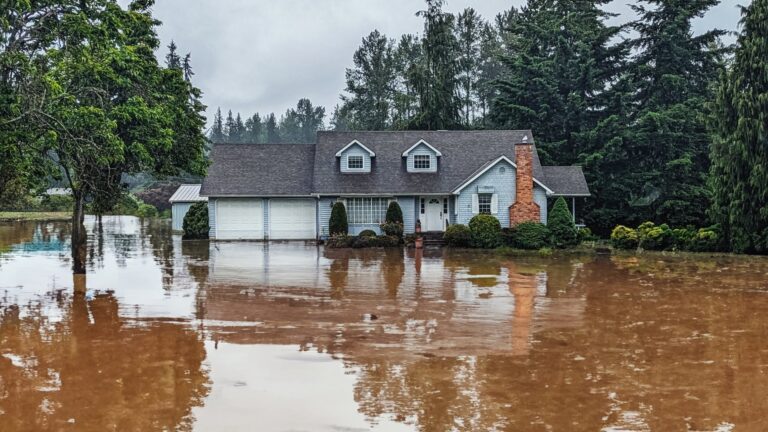Climate change has shaken up the U.S. real estate market, with buyers no longer simply seeking better quality of life or affordable housing — but also considering climate risks before purchases.
Turn up the volume on your real estate success at Inman On Tour: Nashville! Connect with industry trailblazers and top-tier speakers to gain powerful insights, cutting-edge strategies, and invaluable connections. Elevate your business and achieve your boldest goals — all with Music City magic. Register now.
Climate change is shaking up the U.S. real estate market, with homebuyers no longer just seeking better quality of life or affordable housing — they’re also weighing climate risks when considering a purchase.
As extreme weather intensifies, areas once considered safe havens are facing soaring insurance costs and property devaluation, according to a new study from climate research company First Street. Americans are on the move, and this shift could wipe out nearly $1.5 trillion in real estate value over the next 30 years.
According to the report, “over 55 million Americans will voluntarily relocate within the U.S. to areas less vulnerable to climate risks by 2055, starting with 5.2 million in 2025.”
For decades, people flocked to suburban areas around big cities and Sun Belt states such as Texas and Florida, chasing warmer weather and lower costs. Now, these same areas are experiencing severe climate impacts, making them riskier and more expensive to insure.
On Monday, State Farm asked the California Department of Insurance to increase rates in the state by an average of 22 percent “to help avert a dire situation” as the company works to pay the thousands of claims it has received in the wake of wildfires in LA. Since Feb. 1, the company has paid out more than $1 billion in claims and received more than 8,700 filings, according to officials.
In May 2023, the insurer announced that it would no longer write out new policies, and less than a year later, the decision was made not to renew 30,000 homeowners’ policies due to “catastrophic risk.”
Coastal regions face rising sea levels, while inland areas battle worsening heat waves, droughts and floods. The Sun Belt, in particular, took a major hit in 2024, with 27 billion-dollar weather disasters, totaling over $182 billion in damages.
Texas was hit the hardest with 20 major disasters in 2024 alone, while non-Sun Belt states Florida and North Carolina also saw extensive damage from severe storms and tropical cyclones.
Despite the climate risks, many Americans are still moving to disaster-prone places, particularly Texas and Florida. In 2023, counties with high wildfire risks, especially Texas, gained more than 63,000 new residents, while flood-prone counties, including Florida, added another 16,000 people, Redfin reported.
This trend is surprising, given that Texas, Florida and California have absorbed over 40 percent of the country’s $2.8 trillion in disaster-related costs since 1980. It does underscore how home affordability and job opportunities still outweigh climate concerns for many buyers.
As climate risks continue to grow, so do the costs of homeownership. Insurance premiums are rising, with the largest increases in Miami (322 percent), Jacksonville (226 percent) and Tampa (213 percent).
Some insurances are even pulling out of high-risk states altogether. For example, before the recent Los Angeles wildfires, several insurers had already stopped offering coverage, leaving homeowners stranded with few options.First Street estimates that if insurance pricing was fully adjusted for risk, premiums would jump by 29.4 percent by 2055.
In addition to these increasing insurance premiums, higher utility bills and rising maintenance costs as a result of climate change are making homeownership more expensive across the board.
Housing values in high-risk areas may start to decline as a result, while climate-resilient regions, including parts of the Midwest — Dane County, Wisconsin and Franklin County, Ohio — are expected to hold steady.
Though predicting long-term migration trends is tricky, one thing is clear: Americans are becoming more aware of climate risks when choosing where to live.
“I think we are seeing an increased rate of response to climate exposure, and I think a lot of it has to do with just the point that we’re at right now in time where we’re having more frequent, more severe climate exposure events,” Jeremy Porter, First Street’s head of climate implications research, said, as reported by USA Today.
For homebuyers, access to climate risk data is becoming a key part of the decision-making process, Porter said. As awareness grows, so will the impact of climate change on where and how Americans choose to build their lives.





